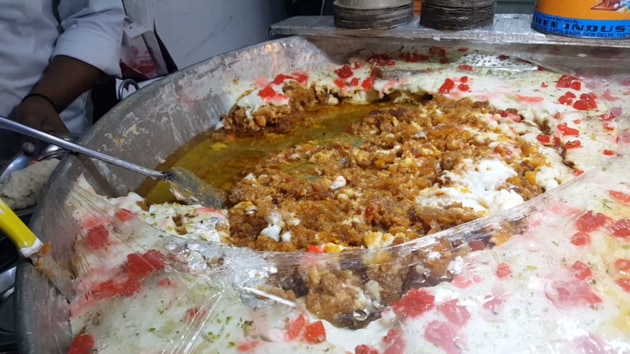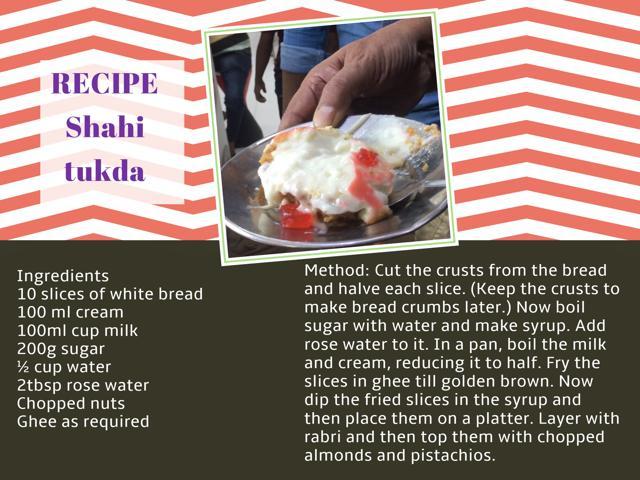Tried and Tasted: Head to Matia Mahal for a bite of the sinfully rich Shahi Tukda
Legend has it that the dish came with the Mughals, though some hold that it is an Indianised version of the bread and butter pudding of Britain.
When I was a kid, sweets were an obscure object of desire. A lot of people those days prepared their sweets at home. My mother, as I have said elsewhere, did not stray into the kitchen much. But once in a while we ate a sweet the taste of which still lingers in my heart.

She would take some bread, cut them into squares and fry them. Then we would top the fried bread with a creamy dollop of condensed milk. And that, to my mind, was nirvana.
Now that I am older, wiser and better looking, I no longer have to fry bread and look for condensed milk. I go to Old Delhi for shahi tukda, which is a heavenly – and sinfully rich – dessert.
It’s a simple sweet which can be topped up with all kinds of ingredients such as slivers of almond and little bits of pistachio. You can flavour it with saffron threads and cardamom powder. But essentially it is a piece of bread that has been fried, dipped in sugar syrup and then smeared with rabri – sweetened and thickened milk.
If you are in Matia Mahal, the main road from Jama Masjid, you will find three small shahi tukda stalls. We went to Cool Point Shahi Tukda, which is run by Mohammed Zahid and Mohammed Zuhaib. I had eaten their shahi tukda earlier and liked it immensely. So I thought the time had come – now that the blistering heat was behind us – for another visit.
Shahi tukda literally means a royal piece or chunk. In some places, the bread is fried, dipped in sugar syrup and kept aside, and when being sold or served, is topped with the rabri. In Cool Point, the shahi tukda is first assembled and then kept in a paraat, which is a huge, shallow-bottomed utensil. It is sold in grams or kilograms, with the men at the counter deftly cutting off wedges for you.

It’s a delightful sweet -- very rich, and very tasty. You can’t go wrong with bread, ghee, milk, sugar and cream, can you? The bread softens with the rabri, and literally melts in the mouth.
The sweet is much loved in Hyderabad, too, where it is called double ka meetha. Some chefs like to bake the dish with layers of bread and rabri. And some prefer to just coat the fried bread with thick rabri.
Legend has it that the dish came with the Mughals, though some hold that it is an Indianised version of the bread and butter pudding of Britain. The Mughals would have used their rotis as the base, while the Hyderabadi dish clearly doffs its cap to the British, for double here is the short of double roti, which is the Hindi for bread.
I thank them both. And I certainly thank the kaarigars – skilled workers – who bring such joy to our lives with this wonderful sweet. And jog some sepia-tinted childhood memories.





